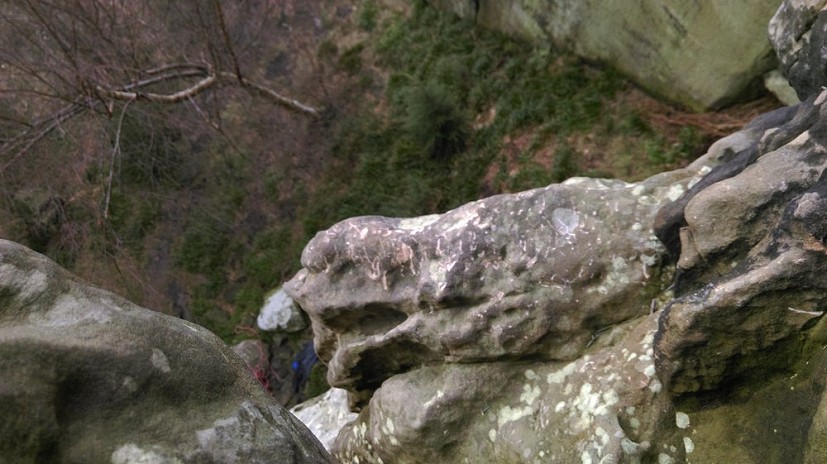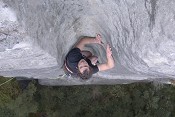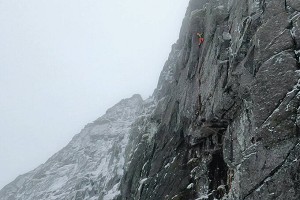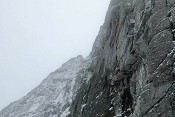
UPDATE: A group of climbers have owned up to using crampons at the crag, contacting both UKC and the Northumbrian Mountaineering Club and expressing their apologies. It would appear that naivety rather than deliberate vandalism was the issue:
"The folks who did this have come forward. They are a (local) group of relative newcomers to the sport and are now aware that what they did was wholly inappropriate. Hopefully we will not see a repeat." - Steve Blake, NMC
UKC User Mark Dunn (dakidunn) has alerted us to some crampon scarring at the popular sandstone outcrop Kyloe Crag (Kyloe Out), Northumberland, in the wake of recent winter weather. Sandstone is a particularly soft rock, not deemed suitable for dry tooling, and the popularity of this area for trad and bouldering has warranted an extra layer of criticism. An act of plain ignorance, or deliberate deviance?
In a UKC forum post, Mark commented:
"We were surprised and very disappointed to see that someone over the recent "winter weather" period had climbed a number of routes (on this sandstone crag) wearing crampons causing damage to climbs including Miney, Mo and Flake Crack.
I really hope the person/s who did this were ignorant of the fact that you just don't do that on sandstone, rock climbing crags with no winter routes on them."
We got in touch with Steve Blake - Vice President of the Northumbrian Mountaineering Club - to shed more light on the delicate nature of these sandstone crags and underline the severity of the damage:
"Northumberland's sandstone is a very fragile medium, and in the County we spend a lot of effort spreading the word about best practice and sustainability, issues which underpinned the evolution of bold climbing here. I would like to think that most climbers, (both local and visitors) will know, for example that climbing on wet or drying sandstone is discouraged, along with poorly rigged and executed top roping, and running endless (when often futile) laps on problems.
Generally this message is well received and the recommendations adopted by those who climb here. People 'get it!' This makes the discovery of crampon scratches in the Bay right of Australia Crack pretty baffling. I never thought we would need to add ' No Dry Tooling' to the list of bad practices... But to be clear, under no circumstances should Northumberland's (or anyone else's) sandstone crags be used as a venue for Dry Tooling, they cannot sustain that kind of activity and damage.
I hope the incident will prove to be an isolated, misguided act by someone ignorant of our local ethos. Please spread the word, particularly outside the electronic world, the perpetrators may not use UKC and local social media/forums, and indeed, may have been visitors.
If you witness this sort of activity in the County please make sure those engaged in it are made aware that it is wrong."
A similar and very much deliberate dry-tooling episode in 2010 at the popular quarry Millstone prompted outrage from the climbing community, as reported on UKC.















Comments